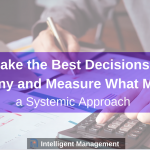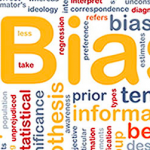In the previous post we looked at interdependencies and establishing the goal of the system. In order to steer our system in the right direction we have to know how to make the right decisions. To do this it is essential that we be capable of assessing to what extent our system is achieving its […]
Effective Decision-Making? Understand Your Driver Needs First
When it comes to change, we find ourselves in a fundamental conflict. On the one hand, we don’t want to change because we want to protect a deep need for “control”. On the other hand, we want to change because we want to protect a deep need connected with “vision” or growth. Both needs are […]
What’s Driving Profitability in Your Business and What Isn’t – How to Find Out
If you knew accurately what is actually making money in your company wouldn’t that then influence all your decisions regarding cost and investment? Well, isn’t that what accounting is for? The problem is, traditional accounting fails to give a complete and correct picture of what is happening dynamically and what is really driving profitability. Every company is […]
Systemic Tools against Bias for Good Decisions about Risk
Our brains really struggle to be rational. This is a big problem when it comes to management and making decisions, especially decisions about risk. What can we do about it? The improbability of probability The human mind is unable to process probability. It’s a scientific fact proved over the last 20 years in a slew of publications (and […]
Managing Risk and Fear
No one can deny that risk exists. It’s the potential to lose something of value. It would be irresponsible to ignore it. The question becomes, what kind of decisional practice and behaviors are operationally and economically effective when it comes to risk in organizations? Operating from fear An article in Mashable about Google+ is a […]
Uncertainty and Choice: Quantum Mechanics for Leaders and Managers
A recent article in ‘Scientific American’ has been getting some attention called ‘Quantum Epistemology for Business’. As two of our partners are physicists we have to have our say so here’s our blog post about business and quantum mechanics, by Dr. Giovanni Siepe. Let’s be honest with ourselves: we don’t like uncertainty and we don’t […]
Your Job as a Leader/Manager? Reduce Variation
They may not be teaching this in MBAs, but a company is a complex system ruled by non-linear interactions that make it difficult to make any prediction when any change is effected. That’s why any approach to improve the company has to be “holistic”, i.e. address the whole system, and consider all the interactions/interdependencies. What is […]
Change and the Decision Making Process
In our previous post, Change: Why Do We Find it So tough? we looked at the fundamental conflict underlying change; that conflict emerges because of our need for control on the one hand, and our need for vision on the other. The need for control and the need for vision are common to individuals as […]
Uncertainty and Choice: Quantum Mechanics for Leaders and Managers
Let’s be honest with ourselves: we don’t like uncertainty and we don’t like variation in everyday life. However, we can, and we must, live with both. But we can do much more than just put up with them when we understand them better and new science helps leaders and managers do just that. Making decisions and […]
Why change? Part 2
In Part 2 we look at how cause-and-effect reasoning and acknowledging our ‘cognitive constraints’ are crucial in understanding why, when, what and how to change. Dr. W. Edwards Deming used to warn about the consequences (cause and effect) of seemingly simple actions: “if we kick a dog in the street, we are responsible for the […]














